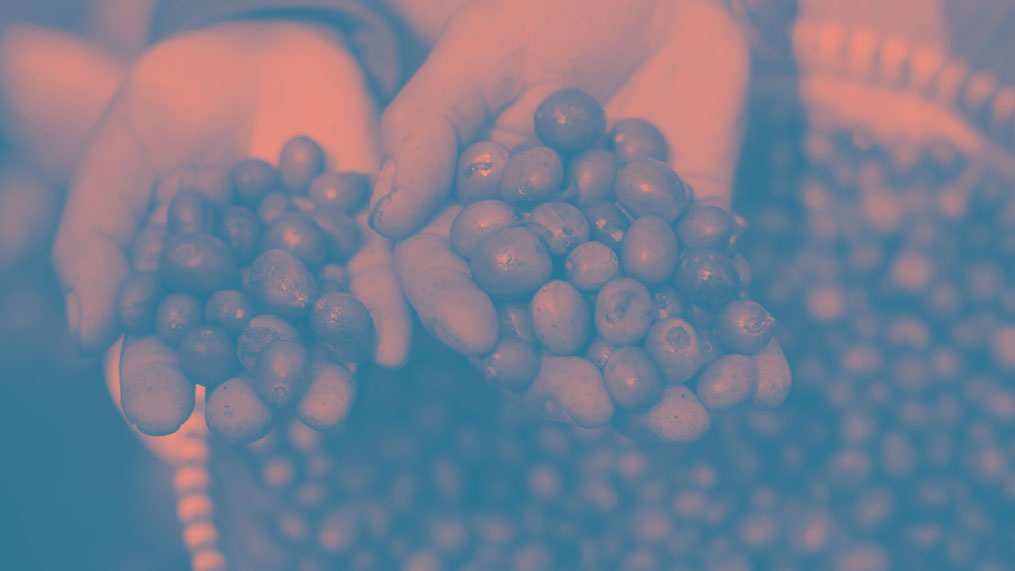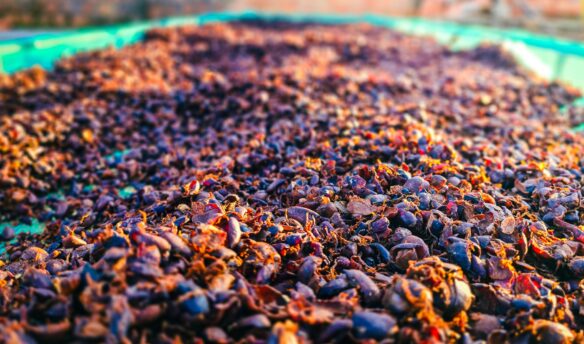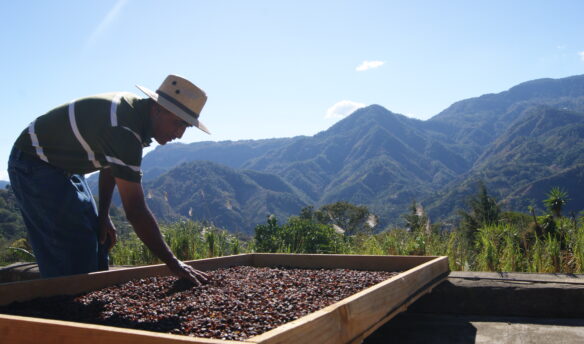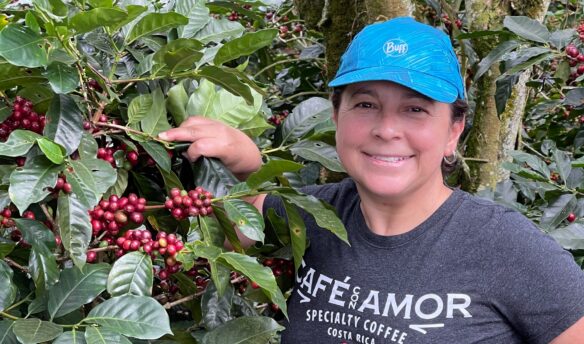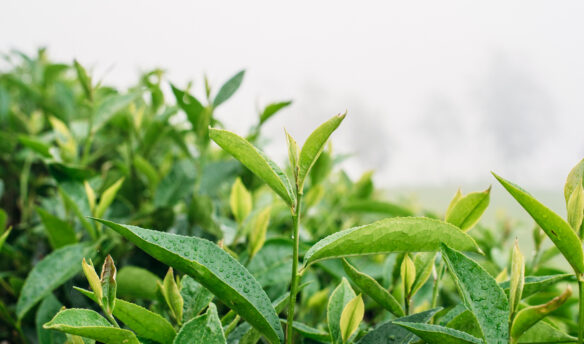[C]offee professionals in North America had a unique opportunity in September to attend The Association for Science and Information on Coffee (ASIC) Conference in Portland, Oregon. Since 1963, ASIC has held their conference biannually, but this is only the second time the United States has been host. (The last time was 1991 in San Francisco.) ASIC collaborated with the Specialty Coffee Association to broadly promote the conference and to include an industry day aimed at connecting researchers to coffee professionals. As a coffee educator and consultant I spend my days teaching producers, roasters, tasters, and baristas the most current and relevant information in their fields. By attending this conference and learning the current research I can better serve my students and clients, and readers of Fresh Cup!
Much of the ASIC content was thick with scientific jargon and acronyms and required more than a rudimentary knowledge of chemistry, biology, genetics, and food science. Despite the densely packed content, there were myriad presentations and research of importance to non-scientific coffee professionals working throughout the supply chain.
The science of coffee is more important today than ever. The coffee industry is facing pressures from climate change, challenging farm economics, and threats from California’s Prop. 65 and overblown claims about acrylamide in coffee. The conference is the front line where researchers investigating these concerns gather to share results and learn from one another through a series of plenary talks, posters detailing current research, and networking sessions.
The ASIC conference is necessarily complex since coffee science covers so many disciplines, and our industry is so complex starting from coffee genetics, the agronomy at the farm through the chemistry of post-harvest processing, to the reactions occurring during roasting, and brewing and extraction. To make it more digestible, ASIC Conference is organized into a series of sessions covering biochemistry & biotechnology of green coffee; plant science, pathology, and protection; climate change; farm management; roasted coffee technology & processing; coffee chemistry & sensory sciences; sustainability and labels; and consumption and health.
As a coffee educator I found many sessions to contain information important to roasters and retailers, crossing each of these sections, and I want to share some of these details with you.
Plant Science
Efforts are underway by World Coffee Research (WCR) and Plant Trust to better understand, preserve, and enhance our use of genetic materials existing in seed banks around the world. Dr. Sarada Krishnan from the Denver Botanic Gardens (whom Boot Coffee collaborated with in earlier research to discover the wild parentage of the lauded Gesha variety) presented her research, which includes techniques underway to identify and conserve additional members of Rubiaceae family of plants beyond the commercially viable arabica, canephora, and timor hybrids. Understand the genetic material that makes up the product so many globally rely upon and preserving a diverse gene pool is one method to combat climate change. Climate change is already impacting yields, and WCR has published research projecting coffee’s limited viability in the near future.

Dr. Krishnan spoke about her efforts to survey gene banks. In the case of coffee, a gene bank is a farm growing a variety of species of the Rubiaceae family of plants. She was able to survey 16 institutions, and ultimate visit seven of them, to assess their preparedness to act as a long-term solution to some of these issues. Ultimately four gene banks were identified for more targeted interventions: CATIE in Costa Rica, CNRA in Côte d’Ivoire, Ethiopia Biodiversity Institute (EBI), and FOFIFA in Madagascar. Each faces stresses and challenges including aging trees, unsuitable climate conditions, inadequate funding and care of facilities, uncertain land-tenure, and a lack of formal collaboration between facilities. The initial four are targeted by WCR and Plant Trust, with the goal to secure funding which will enable these institutions to address these stresses.
For those of us roasting and brewing coffee every day, Dr. Krishnan’s work could ultimately secure for our companies reliable and longterm solutions to stresses we haven’t yet fully felt, but that are already impacting the lives of coffee producers in tangible ways. Other researchers with expertise in plant breeding, genetics (and genome editing), leaf rust resistance, and agronomy best practices delivered papers covering research that’s seeking to assure long-lasting access to coffee despite the threats of a changing world.
Certification and Labels
These in-depth and technical presentations covered important topics, but were overshadowed in my mind by the reality of stagnant and falling global coffee prices. During the week of ASIC, prices were below USD $1 per pound. At these prices, coffee is unsustainable for the vast majority of producers. The scientific presenters may have been aware of the human element struggling in these economic conditions, but their papers and even introductions failed to address them head on. I applaud the organizers for providing Darrin Daniel from The Alliance for Coffee Excellence a platform to address this issue head on while discussing their quality competitions and auction models as one method for addressing farmer livelihoods.
In another session David Browning, CEO of Enveritas, a non-profit providing sustainability services for the coffee industry, shared their work in a session titled “Comprehensive Estimate of Global Coffee Farmer Populations by Origin.” This was a comprehensive initiative to gain an accurate count of the number of coffee farmers in the world – a number often estimated (but unverified) at 25 million coffee farms. Through their research interviewing 20,000 coffee farming households, working with producing country coffee institutions, and statistical modeling, they were able to more accurately estimate the number at 12.5 million and estimate production for a number of producing countries. My company, Boot Coffee, is currently engaging on projects with USAID in Colombia and Ethiopia, and we find this data essential as global philanthropy and various governments look to identify areas for development projects and investments to improve the incomes of coffee producers.
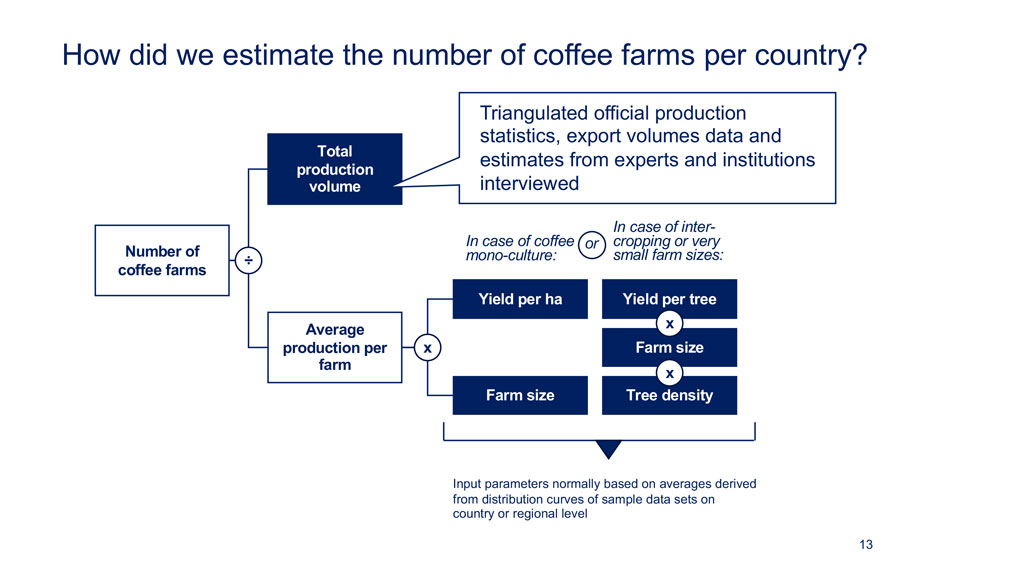
Roasted Coffee and Technology
There was also myriad research addressing concerns at the consuming end of the supply chain. Topics included coffee freshness, coffee and health, sensory science in coffee, and the impacts of brewing on quality. Dr. Samo Smrke from the University of Zurich presented on his research into the science of coffee freshness. He has applied his expertise in analytical chemistry to develop innovative techniques to link instrument analysis of roasted and packaged coffee to sensory analysis. CO2 is an essential element of roasted coffee and is developed during roasting through strecker degradation and pyrolysis. This CO2 is trapped by coffee’s porous structures. Degassing occurs when the trapped CO2 is migrates from this porous structure by diffusion and hydrodynamic flow. Dr. Smrke is able to measure the rate of degassing by measuring the pressure increase in sealed canisters. This measurement was supplemented by using highly sensitive scales that allowed measurements of the mass of coffee lost to CO2 degassing.
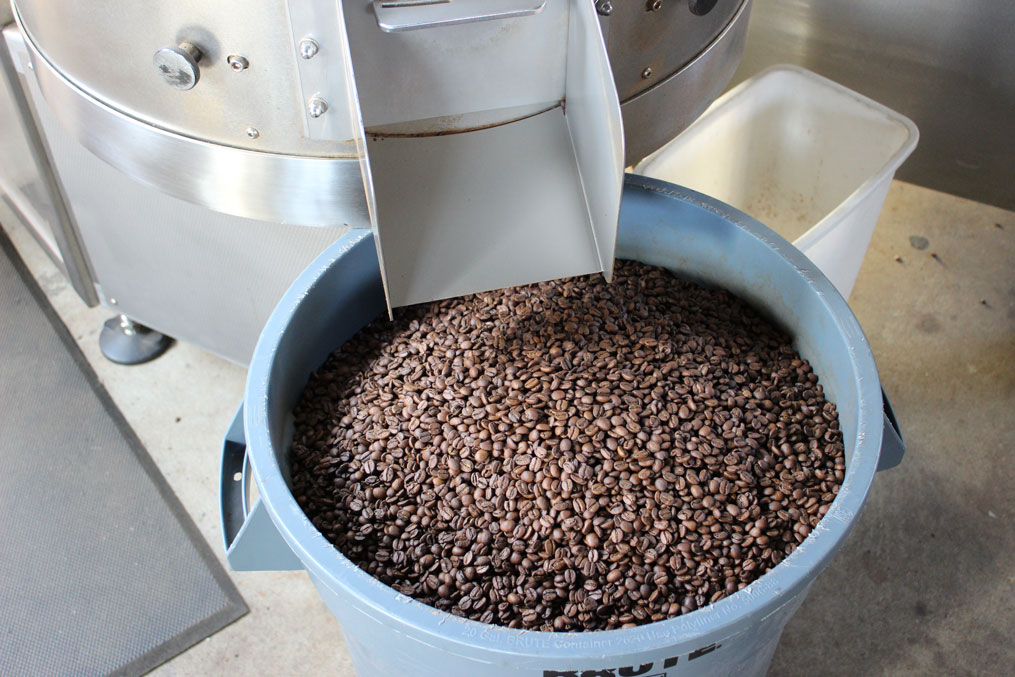
Using these tools he was able to validate the relationship of roast degree on degassing over time (dark roasts degass much more than medium roasts which degass more than light roasts). For ground coffee, he witnessed the highest levels of degassing within a few hours of grinding, with most occurring in approximately 24 hours. As expected, whole bean coffee was much susceptible to degassing to ground coffee. This research continues to validate specialty coffee techniques for quality including grinding just before brewing, using packaging to protect our coffee in order to maintain CO2 and VOCs to maintain freshness and aroma.
Coffee Chemistry and Sensory Science
Several presenters from the University of California Davis presented on research they are conducting at the Coffee Center. This work covered the flavors present in fractions of extraction, the impact on filter shape on flavor, the ways the pulsing during the brew cycle impacts flavor and extraction, and revisiting the coffee brewing control chart first pioneered in the 1950s by E.E. Lockhart. This presentation by Dr. Jean-Xavier Guinard focused on perhaps improving this Brewing Control Chart. Dr. Guinard expressed the following limitations of the current chart which include the chart ignoring chemical reactions and ignoring temperature, the chart conflating descriptive language with consumer acceptance, and sharp dividing lines that imply small changes having large impacts. The original research is from the 1950s and has been revised to confront the new realities of coffee. The 1950s was prior to the advent of Mr. Coffee and other popular drip coffee makers and needs to be adapted to new consumer tastes. UC Davis is just now undertaking this work. With their efforts along with SCA to develop the WCR Flavor Wheel and the team’s expertise in chemistry, food science, and leveraging tasting panels, I expect to see major developments in the way we talk about the relationships between strength and extraction.
Consumption and Health
There was so much important research presented, and I want to conclude with a summary of the presentations on coffee and health. Roasters in California (and those selling in California) are facing potential lawsuits and new labeling requirements due to Proposition 65 and concerns of acrylamide in roasted coffee. Coffee scientists are exploring the health of consuming coffee while industry lawsuits move through the courts, experts provide testimony, and even the FDA weighs in against the requirements. Three presenters covered this area, which several referred to as the coffee health paradox. This is the paradox of individual elements in coffee being potentially harmful, but the beverage overall being overall healthful.

Dr. Rodrigo A Cunha, a Professor of Medicine at the University Coimbra In Portugal, summarized research on this topic and some of his work in the area. Overwhelmingly when large population are studied over long periods of time, coffee is generally found to have little or no impact on health. The New England Journal of Medicine published a study on coffee and life expectancy where 500,000 individuals over 50 years old were followed for 13 years. During that time, 60,000 died. Researchers studied what they died of, and asked, “Is there any association to coffee?” The conclusion: a negative correlation between coffee intake and the deterioration of quality of life and death. Dr. Cunha’s presentation concluded with the following claims:
Drinking coffee actually decreases the occurrences of several cancers: endometrial, liver (for each cup consumed per day, you decrease probability of liver cancer by 15%), breast (not dramatic but present), colorectal, stomach, esophageal, oral cavity, ovarian, and brain.
Coffee can aggravate some issues including bone health and osteoporosis, insomnia, stomach ulcers, and some risks with pregnancy. Given the additional benefits to eye health, oral health, lungs, the liver, kidneys, brain, heart (including arrhythmia), the GI tract, and additional ways coffee aids psychological health coffee is a net healthy beverage for most people.
In Conclusion
This conference is vitally important to our industry. Any coffee professional and entrepreneur should consider attending and spending some time understanding the science behind the beverage. The material is ripe with information of utmost importance for our industry. If you’re a coffee farmer or agronomist, if you process coffee at a washing station or export mill, if you import coffee or roast coffee or take pride in your skills at brewing and extraction you will learn something relevant to your job. As a trainer and consultant crossing several areas of the coffee industry, my students and clients will benefit from this material for years to come. I’m inspired to attend the conference again in two years’ time and am enthusiastic of continued collaboration with industry professionals through the SCA and other organizations. I encourage everyone to connect with their local university and find out what research is underway by the food scientists, engineers, chemists, and botanists there—you may find a valuable resource in your own backyard.
Marcus Young is campus director and senior consultant at Boot Coffee Campus



